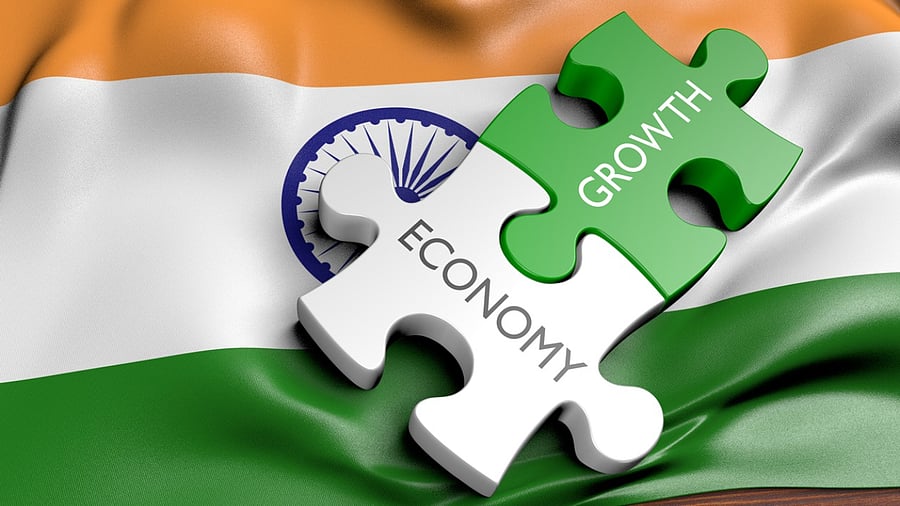
With the ferocity of the second Covid wave ebbing, alongside an increase in the pace of vaccination, the Indian economy seems to put the worst behind as leading indicators seems to suggest and set to consolidate the gains further as the country enters festival season – the Reserve Bank of India’s ‘State of the Economy’ report observed.
“Prospects are brightening for the economy achieving escape velocity from the pandemic as the second wave wanes and preparedness for future remains on war alert status,” the report said.
Kharif sowing surpassed the normal sown area by end-August, followed by the revival of precipitation in September and chances are that even the record sowing coverage of 2020-21 will be exceeded this year. The Index of Industrial Production (IIP) in July is almost at the pre-pandemic level – the July 2021 index just 0.3% below its level in July 2019 – with mining and electricity generation having already exceeded their levels in July 2019.
“This is setting the stage for a rebound in industrial activity over the rest of the year, even as purchasing managers’ indices (PMI) reported cost pressures easing up a bit in August for the first time this year,” the report said, which is authored by RBI researchers, including Michael Patra, the deputy governor in charge of the monetary policy.
“The silver lining came in the form of the services PMI, which surged to an 18-month high on new orders placed with service providers, stemming from greater consumer footfalls, reopening of several firms and aggressive advertising,” the report said.
Furthermore, the report observed that exports are emerging as the gamechanger and potentially the pivot of a higher growth trajectory for the economy. Merchandise exports remained above $30 billion for the sixth consecutive month. The pace of export growth has actually sustained and accelerated in the pandemic, emboldening the setting of an ambitious target of $400 billion for 2021-22 and $1 trillion by 2027-28, the report said.
The report pointed out mobility indicators rising to their highest levels since the onset of the pandemic as confidence resurging, electricity generations recovered to pre-pandemic levels of two years ago, and overall demand is gaining firmer ground.
Petrol consumption recorded an uptick in August though aviation turbine fuel continued to be tepid; e-way bills remained above pre-pandemic levels indicating higher goods and services tax (GST) collections; automobile wholesales recorded an uptick though supply shortages of semi-conductor chips impacted the production of passenger vehicles.
In the services sector, Indian Railways freight continued to be impressive, marking an increase of 16.9% in August (110 million tonnes) over its level a year ago. “Even though it registered a decline on a month-on-month basis, it improved by 21.5% over the pre-pandemic level of August 2019,” the report said. Of the major commodities, cement freight recorded a sequential improvement in August.
Among various infrastructure segments, roads received the highest government projects worth Rs 22,200 crore in January-July 2021 – three times compared with the corresponding period of the previous year. The fast-moving consumer goods (FMCG) sector surged in August 2021, with demand for goods remaining broad-based across regions.
The real GDP growth for the first quarter of the financial year was 20.1% - which was largely due to the favourable base effect as growth plunged to a record 24.4% during the same period of the previous year.
“While attention has largely been drawn to base effects and the shortfall relative to pre-pandemic levels, the terrible experience with the second wave of the pandemic – when this GDP was being produced – should not be forgotten,” the report said adding innate resilience of the Indian economy during the second wave stood out.
Inflation
Headline consumer price-index-based inflation grew by 5.3% in August – the lowest in four months – and remained within the central bank’s tolerance zone for second consecutive quarters as supply conditions eased.
“A deceleration in the price momentum to around 20 basis points (bps) from 70 bps a month ago, along with a favourable base effect of around 50 bps, which completely offset the price momentum, brought headline inflation down 30 bps from its level a month ago to 5.3% in August from 5.6% in July 2021,” the report said.
Despite inflation remaining on the higher side of its tolerance band, RBI has continued with its accommodative stance along with maintaining ample liquidity in the system to keep interest rates that would allow growth to revive and sustain.
“India has chosen not to join the EME bandwagon of rate-hikers that is gathering numbers and instead, to maintain an accommodative stance as long as necessary to revive and sustain growth, with the limited space provided by inflation remaining within the tolerance band, despite being elevated, and not outside it,” the report said while explaining the stance as ‘judgement call’.
“It is all about giving growth a chance to reclaim a place in the sun while pursuing a graduated reduction in inflation from the pandemic high, spreading out output losses over the disinflation horizon,” the report added.
Watch latest videos by DH here: